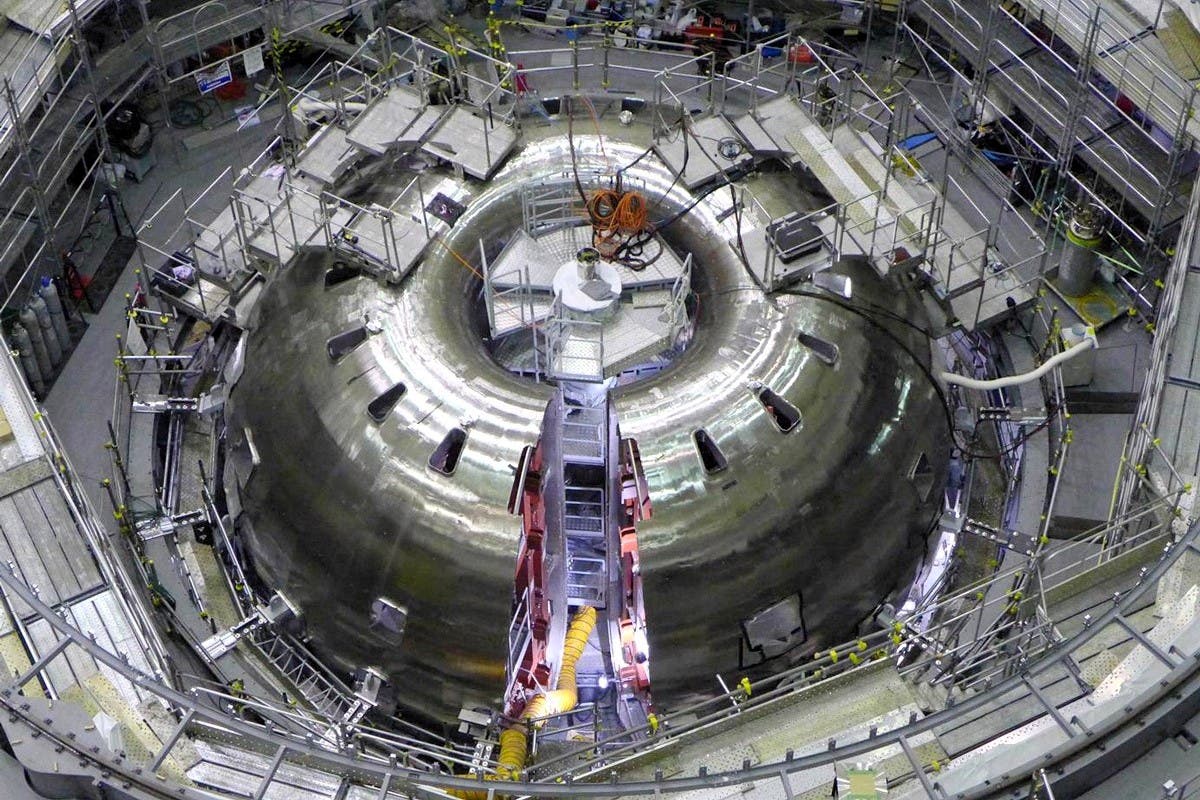The scientists used lasers to fuse two light atoms into a single one, releasing 3.15MJ (megajoules) of energy from 2.05MJ of input – roughly enough to boil a kettle.
Why do we even study this? Renewables are the only way. This is a waste of money which is a finite resource.



So 1. This is newable. Green, almost waste free, and unlimited.
If we can refine fusion, we will stop global warming and energy insecurity, virtually overnight.
It’s not a waste to invest in clean tech R&D. At one point, people said the same thing about solar, and look where we are now
While this is exciting and there are many reasons to continue to research fusion, fighting climate change is very much not one of them. It has all of the real problems of fission, namely high cost, low scale, and difficult construction, but exacerbated to an extreme degree. If new fission projects struggle to get investor funding becuse of low profitability and difficult construction times dispite nearly a century of development, it is unlikely that a technology so complex and expensive that we don’t even had a plan for a power plant yet will do better.
We might have a fusion pathfinder plant by 2050 or 2060, we need to be off fossil fuel by 2030 to 2035. We might be able to built sufficient fission by then if we started now at scale, national average construction times tend to be between 5 to 10 years, but fusion is a tool that might at best replace the power plants we build today, not the coal and natural gas plants we built yesterday.
I bring this up not because I oppose funding fusion and pure science, but because any argument that calls it an answer to climate change is going to fall apart the second you consider any alternative on a cost or time basis.
Fission requires insanely costly wastes management. It is very dangerous and security is a huge costs-contributing factor. This is not the case with fusion, so costs might be lower despite complexity.
Fusion also produces most of the nuclear waste that a fission plant does thanks to undergoing the same nutron activation process, and while it lacks spent fuel rods, thouse are already infinitely recyclable, so the only real waste saveings would be in low grade waste like dust covered clean suits and such.
This also doesn’t help the case for Fusion very much given that even with these disposal costs ITER has costs four to six times any average fission plant for a donor reactor that has no generating capacity and which is mearly to prove that the physics work, something we did for fission with the Chicago pile in 1942 at an estimated inflation adjusted cost of 53 million dollars.
If it’s this expensive for a proof of concept, it is very unlikely that any full plant would be much cheaper. Compare it to things we can actually deploy at scale today like onshore wind or battery backed solar, and it is pretty clear that Fusion is an expensive but important science project, not a serious proposal to power the electrical grid.
Do you really think PV cells and nuclear fusion are in any way comparable? What a strange take.
In the way the other poster compared them? Yes, in so far as people who complain “the new, developing technology isn’t immediately as optimised and refined as I want it to be” for both.
Do you have a basic understanding of the challenges of getting electricity from a fusion reaction vs the challenges of manufacturing PV panels?
Seeing as you deliberately seem to be missing the point in order to try and feel smarter I’m going to leave you to it. Have a good one.
I asked a question, a relevant one. Your reaction to that question is your problem.
So we should just give up? No.
We can carry on throwing money at it, I’m fine with that. Thinking that fusion is going to save us is dangerous though. We need to be taking action now to get us off fossil fuels and the most cost-effective way to do that is renewables + storage.
i think a central barrier at the moment is fusion doesn’t readily start a chain reaction like fission can. scientists are likely exploring the use of the yield of the fusion reaction to reload the reactor (kind of like an automatic firearm) and these techniques are far from mature in this setting.
PV is a simpler mechanism in every way and we’ve been studying it for more than 100 years. They’re very different both technologically and maturity-wise
The sun is a fusion reactor which is sustaining a reaction for millions of years already. Iter is a concept which tries to emulate this
The first challenge is that nobody knows how to sustain it and have been researching it for 80 years. That’s a pretty big one…
Fusion is constant, wouldn’t require large amounts of batteries to store energy. There are advantages to each.
thus the term “energy mix”… nobody arguing in good faith says PV is all we need
It’s not though, not withstanding stars. We’ve managed 17 minutes so far. We’re so far away from turning this into a useable power source that it’s absurd.
So? The trick is to keep developing the technology, not give up because it doesn’t immediately deliver unlimited energy.
We’ve been working on fusion in one form or another for nearly 100 years. We’re still nowhere near turning it into a useable energy source. I don’t really care if research continues or not, I’m sure the research can be useful in other areas but fusion is not going to save us.